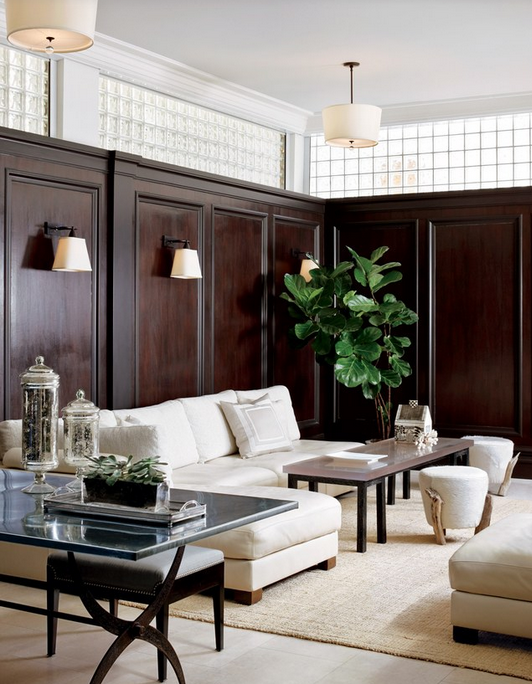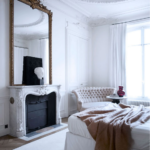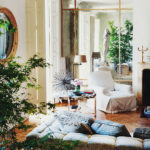Basements are usually the last room in the house homeowners take care of. They are usually designated for storage or laundry areas; I’m guilty of the last one. In our previous home, we kept the laundry in the basement permanently. Nonetheless, real estate market experts say that finishing a basement in your home is one of the home improvements that offer a better return on investment than even adding square footage. ” The amount of return is directly proportional to the grade of materials. When finishing a basement, for instance, wall-to-wall carpeting and drywall will bring a lot more than cheap paneling and a drop-in ceiling.” Elle Decor

Photo by Bruce Buck via AD
Basement conversions have become very popular in recent years, providing an in-home expansion opportunity for properties that are unsuited to the more conventional attic conversion. This is a practice that seems set to continue, as more and more people become aware of how practical and genuinely pleasant a basement conversion can be.
However, as wonderful as basement conversions can be, they do pose some problems. Some of these are related to the structure of the conversion itself; the work has to be completed by experienced professionals, so you don’t find yourself needing to call Restorationeze for assistance in flood rectification in future. It’s also essential to ensure you have the requisite planning permission for any development of your basement before beginning the project. However, the potential problems that basement conversions can cause are not limited to the actual work of the conversion – styling a basement conversion can be notoriously tricky, too.
If you are thinking of investing in your basement or are contemplating such a change in the future, then the interior design tips below should help you achieve the perfect aesthetic. To find inspirations on how to redesign your basement make sure you read 5 Ways to Transform Any Basement Into an Innovative Space before for inspirations.

Photo by Marina Faust
Flooring
- Carpet is the ideal flooring for a basement, as it helps to create a sense of comfort.
- If you’d prefer to use laminate or hardwood, choose a light color to help ensure the area feels as bright and spacious as possible.
- If your space is multi-purpose – for example, you have one part of the basement designated as the office, while another is a sitting area – then use rugs to help effectively separate each area.
Lighting
- For obvious reasons, lighting is incredibly important in a basement conversion, so make this a priority when styling the room.
- It is usually best to have to have a range of lighting options; some ceiling lights, desk lamps, or even spotlights that are wired into the ceiling.
- You can use “daylight” bulbs in an attempt to create the same ambiance as could be achieved with windows. There’s a great guide to these useful bulbs at CNET, which is well worth the read if buying for the first time.
Decor
- Colors should be light in a basement conversion space, but this doesn’t have to mean white – pastels also work well.
- Avoid prints, as they can crowd the space.
- Keep artwork minimal to help increase the feeling of lightness in the room, and avoid cluttering with decorative ornaments.
Furniture
- Big, comfortable furniture works well in underground space; it helps to create a “cozy” feeling that the very nature of the space encourages.
- It’s usually better to opt for a lower number of large pieces of furniture than lots of smaller ones; this, again, helps to create a feeling of spaciousness.
- Opt for closed storage (such as sideboards or drawers) rather than open-shelf storage (such as bookshelves). Closed storage helps to prevent the space from feeling too cluttered with objects.
With the styling tips above, you should be able to enjoy a wonderful basement space that is suitable for a variety of different functions. Enjoy!




